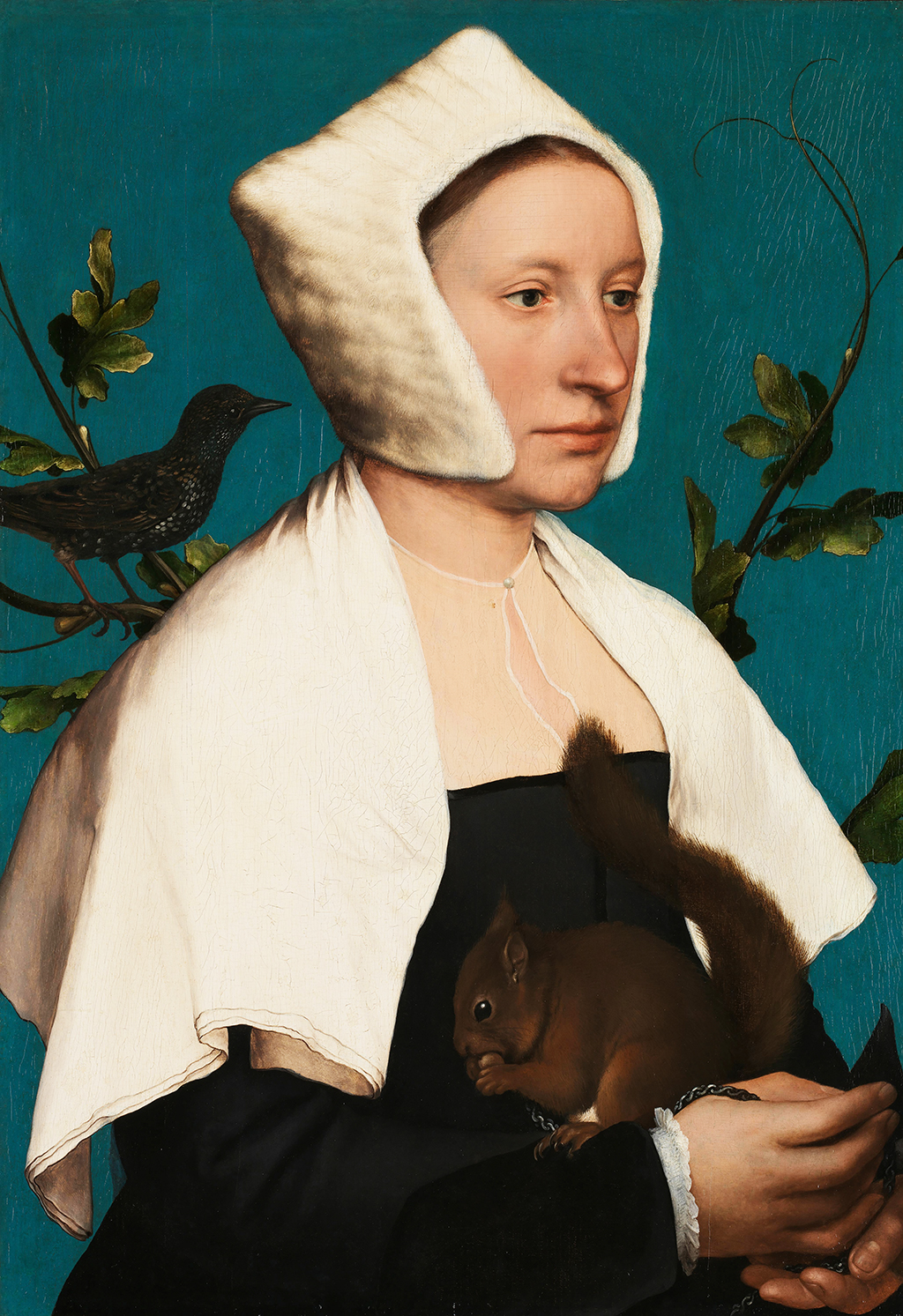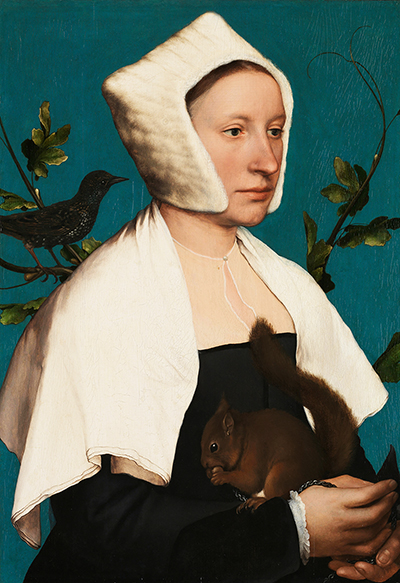This portrait of a Lady with a Squirrel and a Starling is believed to have been produced by Hans Holbein the Younger in around 1526-1528 by which point he would have been in his early thirties.
Artist Holbein again makes use of his signature style of iconography alongside the portrait subject. In this piece he makes use of a squirrel and a starling, whose meaning is not immediately clear. In most cases he would use items in this way in order to demonstate the occupation of the individual, but what could these two objects signify about the women's role in society?
Hans Holbein was, first and foremost, a portrait painter who made much of his reputation within England, painting some of the most important members of society. Holbein was German himself and took a lot of artistic inspiration from creative forces in the Netherlandish regions at this time, plus also several other artists from his native Germany. Although the woman in this painting is not particularly famous, this artwork still is considered one of Holbein's best because of its clear artistic qualities.
Followers of Renaissance portraits would be wise to study two other fine exponents of this genre, namely Diego Velazquez and Anthony van Dyck. You may also learn more from Francisco de Goya paintings, who was another notable Spanish artist. Each of these famous names contributed something different to this inmportant genre, several of them actually serving as court painters at the height of the fame.





